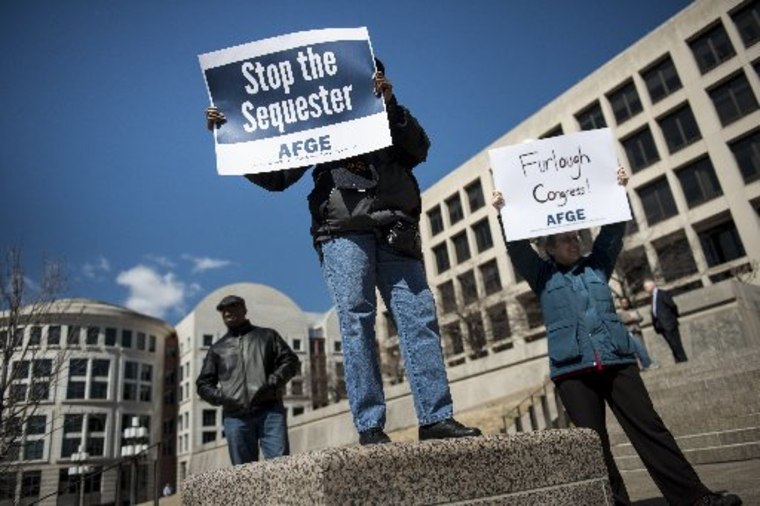The conventional wisdom on sequestration says its anticipated impact was overstated, and the effects of across-the-board government cuts has been minimal. But a look at the economic effect at the local level would seem to tell a different story.
The Huffington Post's Sam Stein and Amanda Terkel have assembled one hundred examples of sequester-induced pain in American municipalities. Among the highlights from their list: cuts to medical responder funding in Nebraska, Cincinnati children being dropped from Head Start, teacher layoffs in Iowa, and reduced unemployment benefits in Pennsylvania.
Even those one hundred stories barely scratch the surface. On April 1, Buzzfeed published a 101st with their profile of Jeff Maryak, a Maryland-based combat veteran who is trying to get redeployed after the sequester cut his salary by nearly 27%.
America's schoolteachers are still waiting to see the full extent of sequestration's damage to their profession. Last month, the National Education Association estimated that over 50,000 educators could be laid off as a result of the sequester. Those teachers who manage to keep their jobs could still experience furloughs or find themselves working with reduced resources.
On the federal level, hundreds of thousands of public employees—800,000 in the Defense Department alone—have experienced unpaid furloughs, with more to come. It is difficult the longterm effect, but the cutbacks are already hindering the government's ability to investigate workplace discrimination claims.
The Environmental Protection Agency and the Department of Housing and Urban Development are also being hit particularly hard. Sequestration could result in “more than 100,000 homeless and formerly homeless people, the majority of whom are families, disabled adults or veterans, being removed from their current house or emergency sheltered programs, putting them at substantial risk of returning to the streets,” according to testimony from HUD secretary Shaun Donovan. And it could cost states as much as $154 million in funding for environmental programs.
Yet the reaction to this fallout has been subdued. "People stopped caring about sequestration" around March 1, according to Slate reporter David Weigel. But it hasn't stopped affecting them.
